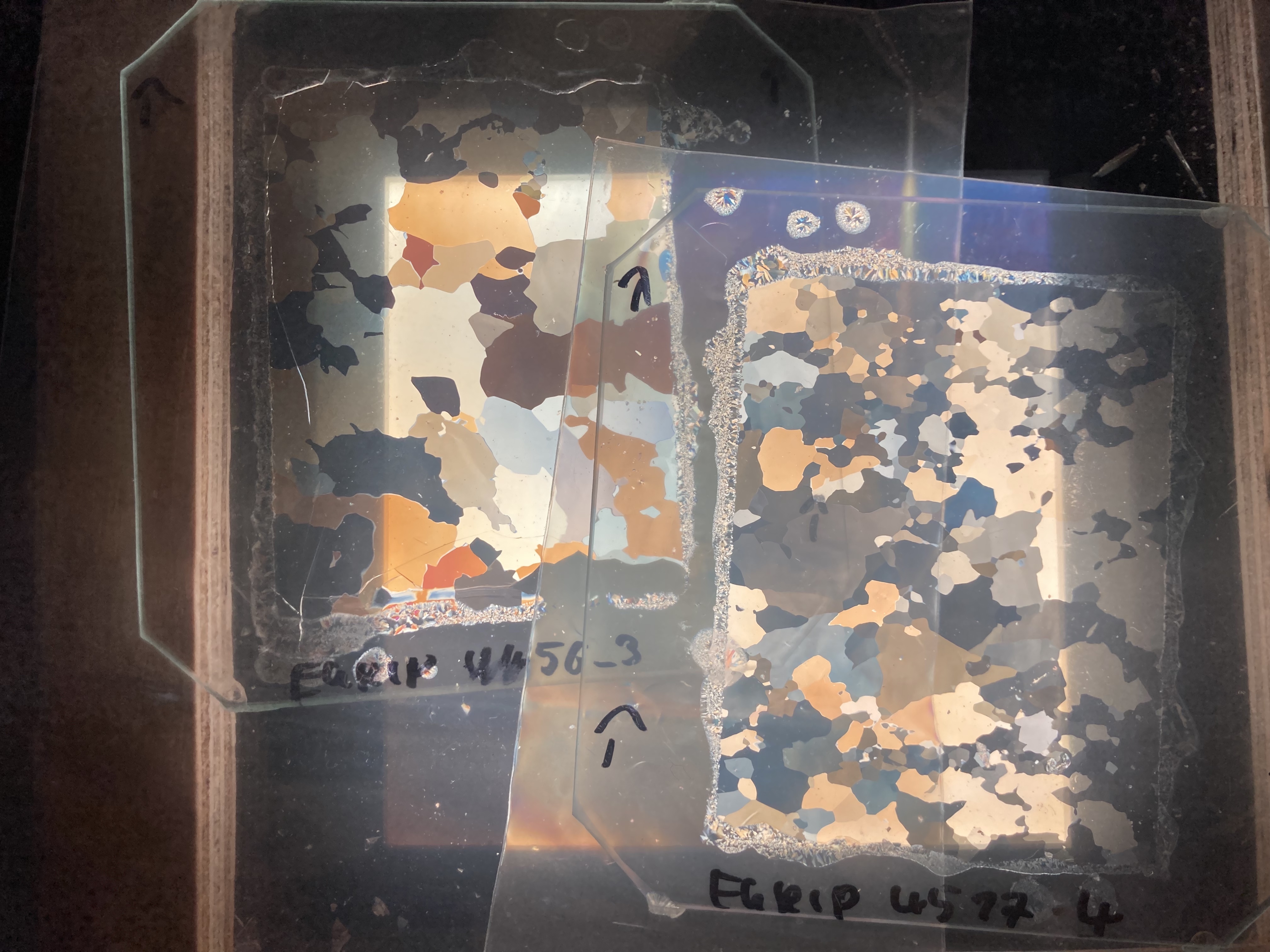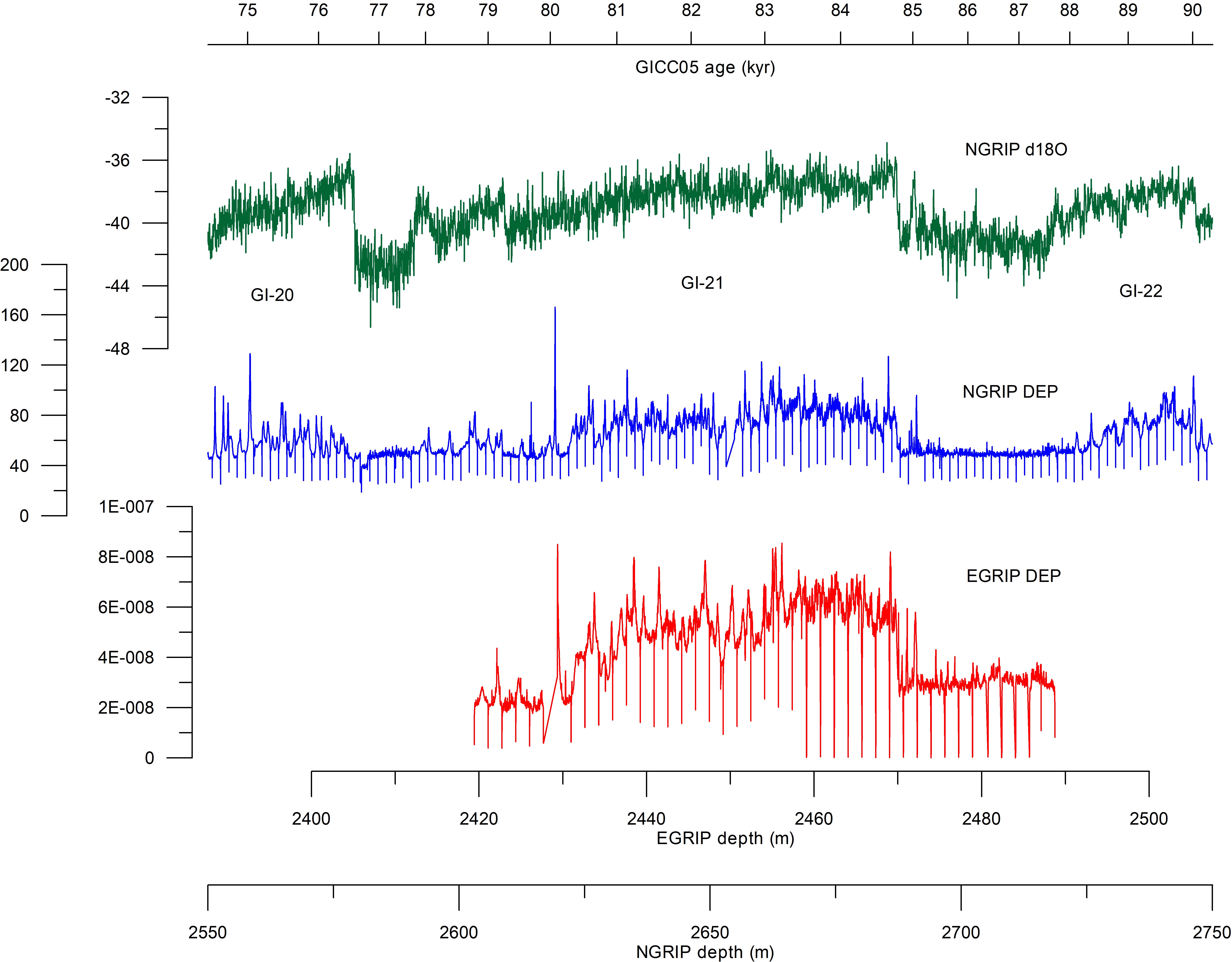May 24, 2023
How far back in time are we with the ice core?

The ice crystal structure changes with climate. In general, the colder it was, the smaller the crystals. Under polarized light individual ice crystals in thin sections of ice show up with different colors. The left-hand sample is from the mild Greenland Interstadial 21 and has large crystals, whereas the right-hand sample is from the cold Greenland Stadial 22 and has smaller crystals.
Today two ice cores have been drilled. The first one had long core catcher marks and was hard to get out of the core barrel. After mounting a third core catcher, the second core had a nice core break and was easy to slide out of the core barrel. So, lets see if this is a new trend. On surface, Tim went out to groom the skiway after our Monday Skier visit, and Yannick cleared the trench entrances from yesterday’s drift snow. Before dinner, Hans – our doctor – made some do ½h exercises in main dome. Probably some of the field participants that do mostly office work will need to see the doctor tomorrow.
When drilling a new ice core, it is always exciting to figure out how far back in time we are. As long as the ice layers are not folded, it is possible to match the core up to existing deep ice cores that are already dated, and then apply the match to transfer the age to the new core. It requires that the same types of analysis have been carried out on both cores, such that similar feature can be identified in them. In the 2023 season we only do one type of analysis on the EGRIP core in the field, the non-destructive ‘Dielectric Property’ measurement, known as ‘DEP’. The DEP record varies among others with climate (higher values in milder periods), and because there was abundant climate variability during the last glacial period, it is not so difficult to match up DEP records from different cores. Both the GRIP and the NGRIP ice cores have also been analysed for DEP, so we can match up to them. The EGRIP-NGRIP DEP comparison shows that the ice cores that were drilled a few days ago here at EGRIP and analysed yesterday occur in a cold climatic period during the last ice age that is known as Greenland Stadial 22 (GS-22). In this period, the ice has an age of about 86,000 years.
What we did today:
- Two long ice cores drilled today.
- Logging depth: 2495.29 m. Processing depth: 2492.05 m.
- Waved goodbye to the Greendrill Twin-Otter.
- Beam groomed skiway after Skier mission.
- Cleared trench entrances for yesterday’s snowdrift.
- Mounted new hoses on Pistenbully.
- Did before-dinner original workout session with Hans.
Weather today: After a night of high winds, the wind dropped off during the day and in the evening it became calm and the blue sky returned. Temperatures -22°C to -30°C. Wind from NW dropped from 20 kt to 6 kt. Overcast during day and clearing up at night.
FL, Anders Svensson

The NGRIP-EGRIP DEP matching that shows how old the ice core is.

